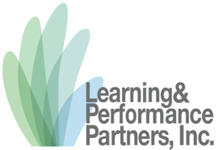Do you have questions regarding instructional design or other learning and development solutions? Then check out this list of frequently asked questions.
How do we make our technical training more effective?
Technical training programs often tap Subject Matter Experts (SMEs) as trainers. Unfortunately, despite their mastery of the subject, SMEs may find it a bit challenging to impart their knowledge via learning programs.
They may not also know how to create learning materials geared for the student. In their desire to give as much information as possible, these materials end up wordy or full of complicated jargon. These overwhelm the learner, making it hard for students to appreciate and relate to the subject at hand.
One such client tapped LPPI to train their SMEs in imparting technical content more effectively. LPPI also developed courseware for the program. The courseware included an instructor’s guide, media materials, learners’ handouts and assessment instruments. This helped improve the consistency of the subject matter delivery across instructors, create engaging materials, and simplify complex information.
Someone told me that instructional design only focuses on the process/content, and is not concerned with company performance. Since I have been a trainer for a long time now, I should just continue what I have been doing. Is this true?
The use of sound instructional design always traces the need for training based on desired performance. ID can be very useful when setting up of training programs that yield results. Subject matter experts/trainers are wonderful resources to help employees do their jobs better; effective ID helps them translate their knowledge into material easily processed by their learners. Without ID there is a tendency for content experts to share as much as they know which can overwhelm trainees and impede learning.
Doesn’t instructional design take such a long time? It may not be practical to adopt.
To answer your question, let me tell you an anecdote about Euclid, the Father of Geometry. When the king asked him if there’s an easy way to learn the theorems and postulates, Euclid answered “There is no royal road to Geometry.”
The same goes for learning programs. Although Instructional Design (ID) aims to find the most cost-effective way of creating and delivering learning programs, shortcuts for the sake of having shortcuts are unacceptable.
Some people might see ID as an “additional step” in creating learning interventions. Thus, they think that the process takes more time with ID. But in the long run, ID can actually save you time and even money. ID is similar to making a blueprint first before building a structure. Sure, some people can build houses without blueprints. However, the results can be disastrous.
The same goes for ID: the extra time you allot for planning is still short compared to the time you waste on a learning program that does not deliver the desired results. Besides, ID does not necessarily have to be a long, drawn-out process. The time spent on each stage of the ID process is also dependent on the needs that must be addressed.
My job is very technical in nature. I think I am good at what I do because I am asked to train and share my knowledge to other employees. But the feedback I get from training department is that my trainees said they did not learn much from me. It is so frustrating. What can I do?
This is a common problem faced by Subject Matter Experts (SMEs) who are asked to train others. SMEs often train using their perspective: that of experts. This causes confusion in the participants who may have very little idea of what s/he is talking about. Instructional design and delivery techniques could help you simplify technical concepts to impart them to others more effectively.
I design training programs but I write my objectives at the end. This is so that the objectives can cover everything I’ve included. Am I doing it wrong?
I would suggest starting with the end in mind: the objectives that meet the learning requirement of your target audience. When you start with the content, what usually happens is that
1) you include topics that are not relevant to the participants,
2) the program becomes longer than necessary, and
3) the learning points are not focused. Your objective should be the anchor that shapes the content.
Why are we not attracting the right kind of people despite our list of competencies?
LPPI studies its clients’ prescribed list of competencies to know if each item is aligned with the needs of the organization. The list of competencies is then trimmed down to include only those essential to the organization’s requirements. This allows the company to have a more focused approach in choosing their people.
One example is when we helped a company align the needed competencies with their HR systems. This enabled the different HR units to work together. We also conducted training needs analysis anchored on the organization’s competencies. With this analysis, the company now knows which learning programs to implement to fulfill their needs.
How can we ensure that our people have the right set of skills? How do we prepare our people for the bigger tasks which may be assigned to them in the future?
You begin by identifying the set of skills required for a particular job. A common mistake is outlining too many competencies that employees lose focus on what is essential.
For this client, LPPI analyzed the key competencies required for the target positions and profiled the employees against these. Then in consultation with the company’s learning and development team plus the line department heads, we charted a development plan. This would prepare their employees for greater responsibilities.
Our training staff do not design nor deliver training. We partner with operations and contract out requirements to external trainers. Do we need to know instructional design?
We end our training programs by asking trainees to accomplish an evaluation form. Isn’t this enough?
We would like to be able to better gauge our training evaluation. Right now, we are just getting feedback from trainees at the end of the session. We have been told to administer a multiple choice test after the program so we can assess what has been learned. What do you think?
I applaud you for wanting to go beyond reaction-level evaluation. But why a multiple choice test? To be an effective indicator of learning, the assessment you use should always be based on the objectives of the program. This is where a sound instructional design process helps: evaluation is linked to design. Otherwise, you may have trainees passing the test but unable to perform the work required.
How do we set up a corporate university?
LPPI has guided several clients in putting up their corporate universities or learning academies. We have helped them establish the purpose of the university and plan the internal resources required to run it.
We begin by helping clients develop a structure and process for the university to maximize on learning. Then we build the capacities of the instructors plus the learning & development department. We also develop the curriculum and integrate online and informal learning (blended learning). We then set up monitoring and outline steps for continuous improvement.
What is the difference between e-learning and blended learning?
E-learning uses computers or internet technologies to deliver learning whereas blended learning combines delivery methodologies or approaches such as face-to-face and e-learning.
As such, e-learning is only one component of blended learning.
We want to make use of technology in our learning programs. Does that mean we should go the route of e-learning?
LPPI helped the client maximize the benefits of e-learning by first assessing how it fits into the company’s existing curriculum. We worked with them to understand their structure, their objectives and constraints. This is to know where e-learning should be incorporated and which delivery mode would best fit each learning element.
We are planning to have more online courses, and less face-to-face programs. Do I still need to know about ID?
I would recommend it more. (When using technology, there is a tendency to overuse it due to its convenience.) There are companies that launched e-learning with more of their focus on the technology, rather than the learning. The courses were conducted but yielded results which were much less than expected. Through instructional design, you will be equipped to conduct content analysis. You can decide what courses can be effectively repurposed for e-learning and which are better implemented using other modalities. And when you do go for online (or blended) learning, ID helps you better engage the learners with self-paced learning instead of offering an automated page-turner.
Our e-learning training has not been getting the results we want. Why?
When it comes to e-learning, most companies fall into the trap of focusing more on the “e” rather than on the learning. One client in particular had been delivering online learning for almost 2 years already. However, their results remained unsatisfactory.
With the help of LPPI, the company realized they were so focused on pushing the e-learning initiative that they forgot the planning part of the intervention. LPPI then analyzed how their existing modules could be repurposed to fit the new requirements. We found a way where e-learning could best contribute to the design of the program.



